ATVs are an expensive hobby. You can usually save some money by purchasing a used ATV rather than a new one. This is especially true when four wheeling is a family activity and you need four or five machines to keep everyone happy. I am not about to drop $40,000 on ATVs so everyone in my family can ride, but buying a used ATV can be a very scary undertaking. Like buying a used car, you have no idea how well the ATV has been cared for and if there are any mechanical problems. However, unlike buying a used car, you really have to be concerned when buying a used ATV that you may be purchasing stolen property.
The safest way to ensure you aren’t buying a stolen ATV is to buy from a respected dealer, but that is not always an option and it also isn’t going to help much on your quest to save significant money. While you can’t remove all risk of a used ATV being stolen, there are some key steps you can take to make sure you appreciate the risk, investigate effectively and prepare for the worst.
The unfortunate reality is that ATVs are fairly easy to steal. They aren’t like cars that are always out in the open with police looking for them and they can easily be thrown in the back of a truck or a trailer and hauled away. This is not only unfortunate for the original owner, but also for the unsuspecting purchaser as well. If you end up with a stolen ATV, it is most likely going to get confiscated by the police and returned to the original owner, unless you are willing to hide stolen property, which you should not.
Many times, the situation you find yourself in when buying a used ATV will tell you a lot about the ATV you are buying and the person from whom you are buying it. Pay attention to any red flags, and if you are uncomfortable with the situation, just walk away. Trust your instincts. It may be hard to walk away from a good deal, but trust that your instincts are saving you from handing over the money for a stolen ATV that you are going to lose anyway.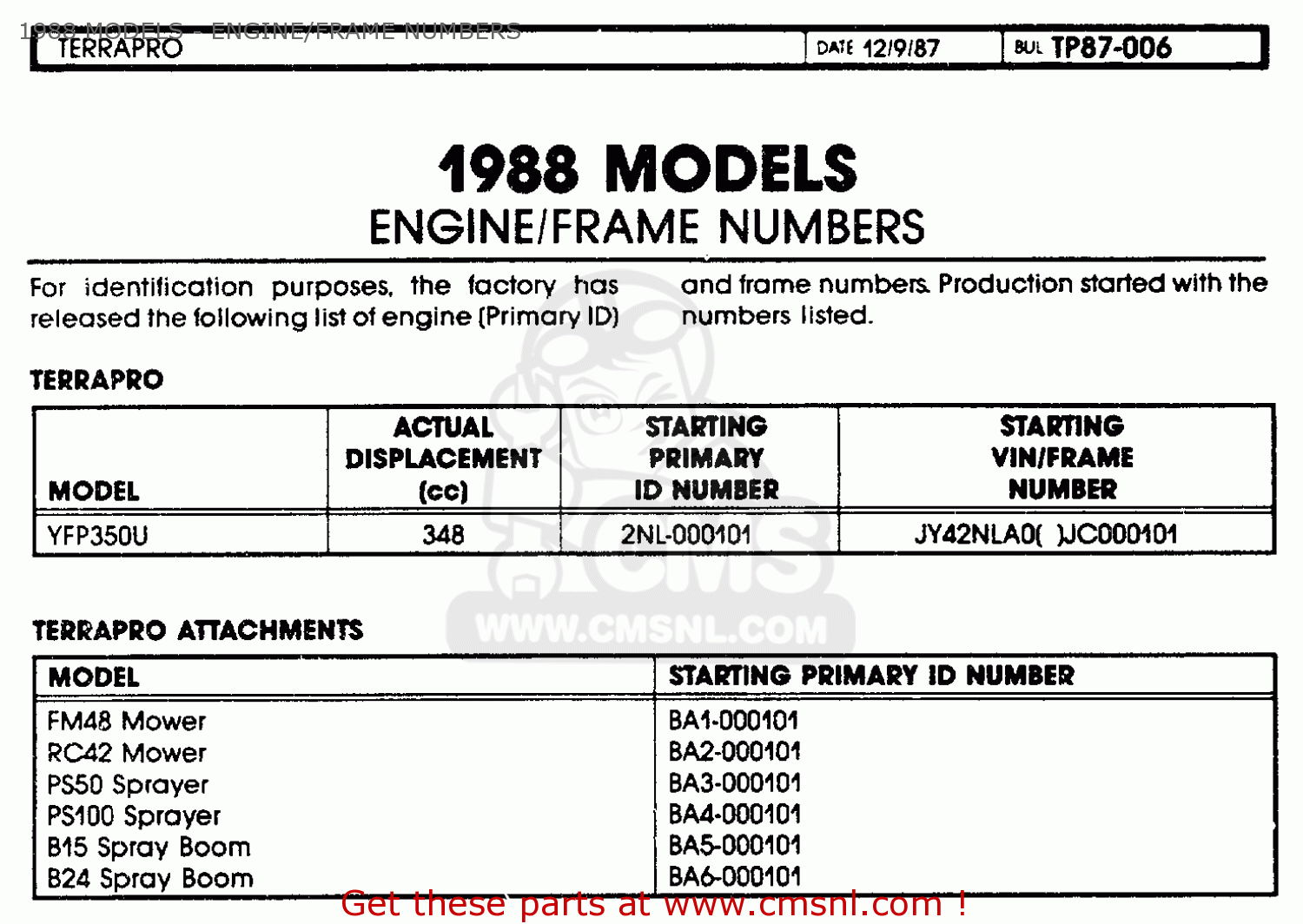 If you suspect the ATV is stolen, don’t accuse the seller of anything. Just let them know you are not going to purchase the ATV and leave. You can let the police investigate to see if it is stolen, but don’t put your own safety at risk by confronting the seller. The following situations are the most common red flags we see when purchasing a used ATV.
If you suspect the ATV is stolen, don’t accuse the seller of anything. Just let them know you are not going to purchase the ATV and leave. You can let the police investigate to see if it is stolen, but don’t put your own safety at risk by confronting the seller. The following situations are the most common red flags we see when purchasing a used ATV.
The first big red flag is a deal that is too good to be true. When the seller is willing to sell the ATV for a much lower price than it is worth, that is an almost sure sign there is something wrong with the ATV. While it is true there may be some valid reasons for an eager seller, you will need to dig into those and determine whether you believe them. We discuss some tips for getting to know the seller later in the article to help determine if the risk is worth it.
If the seller doesn’t have a title to the ATV, this could be a huge red flag, depending on where you live.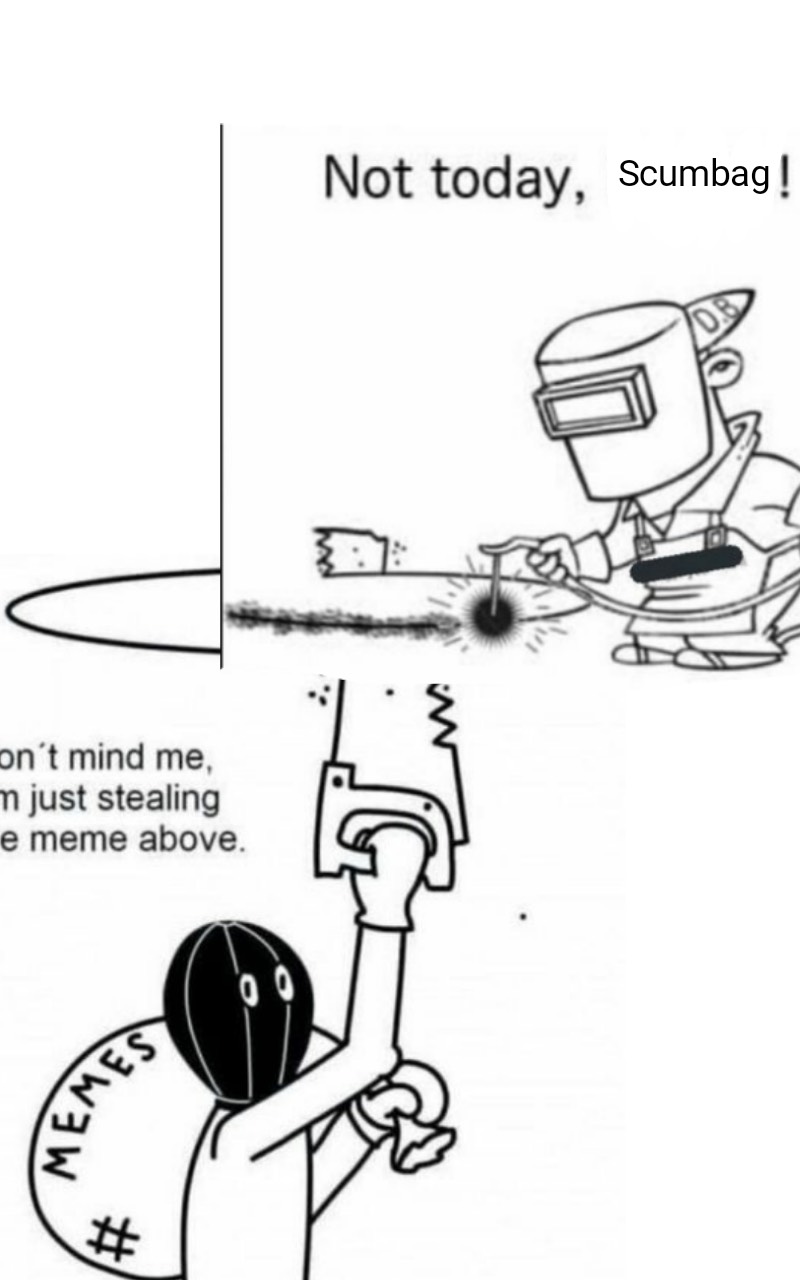 Title requirements vary from state to state so you really need to learn the requirements for the state you are purchasing in before you can decide if the lack of a title is a red flag. Luckily, we have a guide for every state you can reference.
Title requirements vary from state to state so you really need to learn the requirements for the state you are purchasing in before you can decide if the lack of a title is a red flag. Luckily, we have a guide for every state you can reference.
In some states where a title should be available, the ATVs are sold new with a certificate of origin instead of a title. That means that at the time of purchase, it is up to the owner to get a title from the DMV. The owner might not bother spending the time or money getting a title because it might not be a legal requirement. Even if a title is required by law, there are some people out there who won’t get a title even if they are the legal owner.
Fortunately, in one of these legitimate circumstances where a title is not available from the seller, it is usually fairly easy to get a title transferred into your name. You’ll want to make sure that you contact your local DMV to find out what the requirements for that might be and ensure you can do it prior to purchasing the ATV.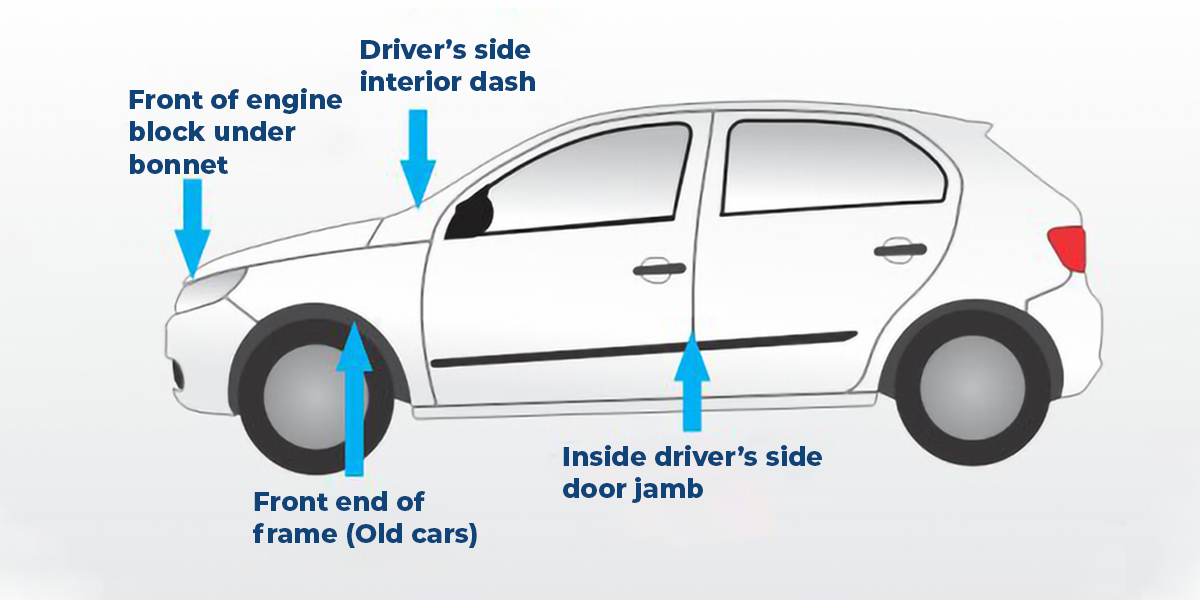 It is even a better idea in this situation to require the seller to get a title in their name before selling it to you. This may be a deal breaker for them, but it alleviates much of your risk.
It is even a better idea in this situation to require the seller to get a title in their name before selling it to you. This may be a deal breaker for them, but it alleviates much of your risk.
Now that we’ve told you the legitimate reasons a seller may not have a title, there are illegitimate reasons as well, namely the ATV is stolen. In a state where the seller should have a title and doesn’t, that is a giant red flag for me. It is not a risk I am willing to take regardless of how good of a story the seller can spin, but the risk you are willing to take is up to you. If you are willing to proceed with the sale, you can alleviate some of the risk by following the tips in this article.
A good thief may have gotten away with stealing both the ATV and the title. Check to make sure the name of the seller matches the name on the title. While the seller may have many excuses for having not put the title in their name, or they may claim to be selling it for a friend, that is not a risk I am willing to take when shelling out thousands of dollars. Insist that you meet the person on the title, in person, and that they sign the bill of sale. Alternatively, insist the seller get the title transferred to their name before they sell the ATV to you.
Insist that you meet the person on the title, in person, and that they sign the bill of sale. Alternatively, insist the seller get the title transferred to their name before they sell the ATV to you.
While a wary seller may be nervous about letting a stranger know where they live, it is a huge red flag if a seller insists on bringing the ATV to your location or meeting in a public place away from their home or business. If they don’t want you to know where they live or work, it is likely because they don’t want you to have a way to track them down when you discover the ATV is stolen or otherwise defective.
Wherever you are meeting, we recommend taking a friend along with you. Not only is it a good idea for safety reasons when you are meeting with a stranger, a friend may see something you don’t. It is easy to get caught up in examining the condition of an ATV and being excited about the prospect of buying a new ATV. Hopefully a friend will alert you of any red flags you miss.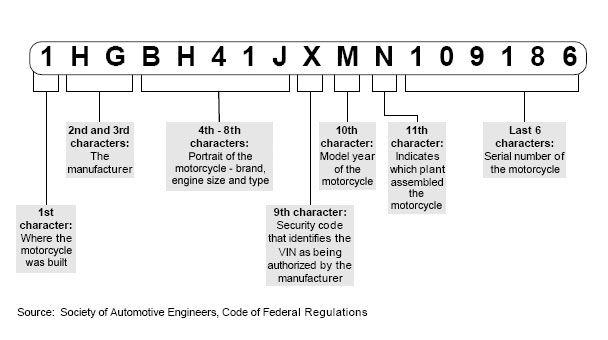
Get all the information you can from the seller about their identity and the history of the ATV. This is especially important if there are red flags with the situation. There may be a good reason for the red flag so you need to figure out the explanation and then decide whether you believe it.
There are some good reasons people are eager to sell an ATV and willing to sacrifice the price. Two common occurrences are divorce and loss of employment. While these can be valid reasons, they may not be true. You may be stuck determining how much you believe the seller and how much you are willing to risk, but there are also additional steps you may be able to take. For example, check the local court docket to see if there actually is a divorce procedure pending.
A scam artist is going to be a smooth talker and have answers for all the expected questions. If you want to learn if he or she is telling the truth, throw a few curve balls and see if they can handle it. Don’t just accept their explanation at face value, ask some follow up questions to expose a part of the story they haven’t pre-planned and see if it startles them or they take a longer amount of time to come up with an answer. For example, if they say they have to sell the ATV due to a divorce, ask them if they are also moving to a new house. This is a logical question when dealing with a divorce, but it is likely something they would not be expecting. Another great follow-up question is asking who their divorce attorney is. You might say, “Oh really, I have some friends that are divorce attorneys, maybe I know yours. Who is it?” If they are really getting a divorce, the name will come right out, but they will almost certainly be caught off guard if they aren’t getting divorced.
Don’t just accept their explanation at face value, ask some follow up questions to expose a part of the story they haven’t pre-planned and see if it startles them or they take a longer amount of time to come up with an answer. For example, if they say they have to sell the ATV due to a divorce, ask them if they are also moving to a new house. This is a logical question when dealing with a divorce, but it is likely something they would not be expecting. Another great follow-up question is asking who their divorce attorney is. You might say, “Oh really, I have some friends that are divorce attorneys, maybe I know yours. Who is it?” If they are really getting a divorce, the name will come right out, but they will almost certainly be caught off guard if they aren’t getting divorced.
You also have a decent shot by asking about the ATV with the local ATV community and on internet forums. If someone has had their ATV stolen, they have likely reached out to the community and online resources to enlist help. Learn about the ATV you are looking at so you know what you are asking about. Try a couple searches with the make and model of ATV you are looking at with the word “stolen” and see if anything pops up. It is also a red flag if the seller can’t tell you much about the ATV.
Learn about the ATV you are looking at so you know what you are asking about. Try a couple searches with the make and model of ATV you are looking at with the word “stolen” and see if anything pops up. It is also a red flag if the seller can’t tell you much about the ATV.
Ask some questions only the owner would know. For example, ask how long that set of tires has been on it, ask what kind of battery it had (check out our article on different types of ATV batteries so you know how to confirm), ask about any aftermarket parts you see, ask about general routine maintenance that has been done (check out our article on braking tips for types of maintenance you can ask about).
Checking the VIN on the used ATV is maybe the most important step you can take, but it is something most riders don’t think about or don’t know how to do. There are two main methods for checking the ATV’s VIN to see if it has been reported stolen. First, you can check with the local police.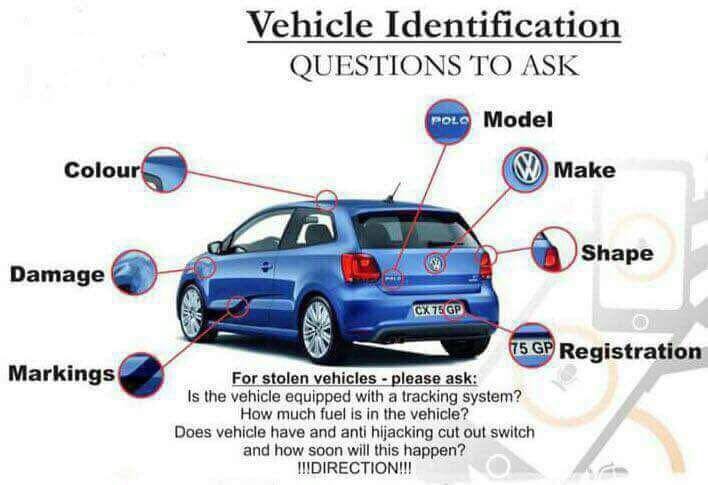 Second, there are a handful of websites that will check the relevant databases for you. I recommend you take advantage of both options.
Second, there are a handful of websites that will check the relevant databases for you. I recommend you take advantage of both options.
Something you need to be aware of is how you go about getting permission to check the VIN number. Don’t try to be sneaky and run the VIN without telling the seller. Explain to the seller what you are doing and why. Educate them on the issue and the resources available if they are not aware. If a seller is wary of you running the VIN, run for the hills. The seller may have good reason for not showing you the VIN, such as a winch that has to be removed to view the VIN, but do not let that stop you from checking the VIN no matter what they say. If they are not willing to do what it takes so you can check the VIN, walk away. It is not worth the risk.
This is going to depend somewhat on your location, but you may be able to just call into your local police department and have them check the VIN and they will tell you whether the ATV has been reported stolen.![]() The great thing about going through your police department is they will hopefully be aware of any reports that have come in from the area, even if they didn’t include a VIN.
The great thing about going through your police department is they will hopefully be aware of any reports that have come in from the area, even if they didn’t include a VIN.
Don’t be surprised; however, if your local agency isn’t as accommodating. While some will take your call and give you a quick answer, others won’t help you unless you actually bring the vehicle into the department so they can inspect it. Of course, if it comes up stolen, they impound it. This will make it difficult, but if a seller is cooperative and willing to take it down to the station, that should ease most of your fears.
Luckily for us, there are a number of websites and services that will check the stolen vehicle databases to determine if the ATV you are looking at has been stolen. Since some of these services are different, it may be worth checking a couple of the websites just to be safe. The VIN may be in a different spot on different ATV models, but it is going to be mounted on the frame of the ATV, usually on the bottom left side.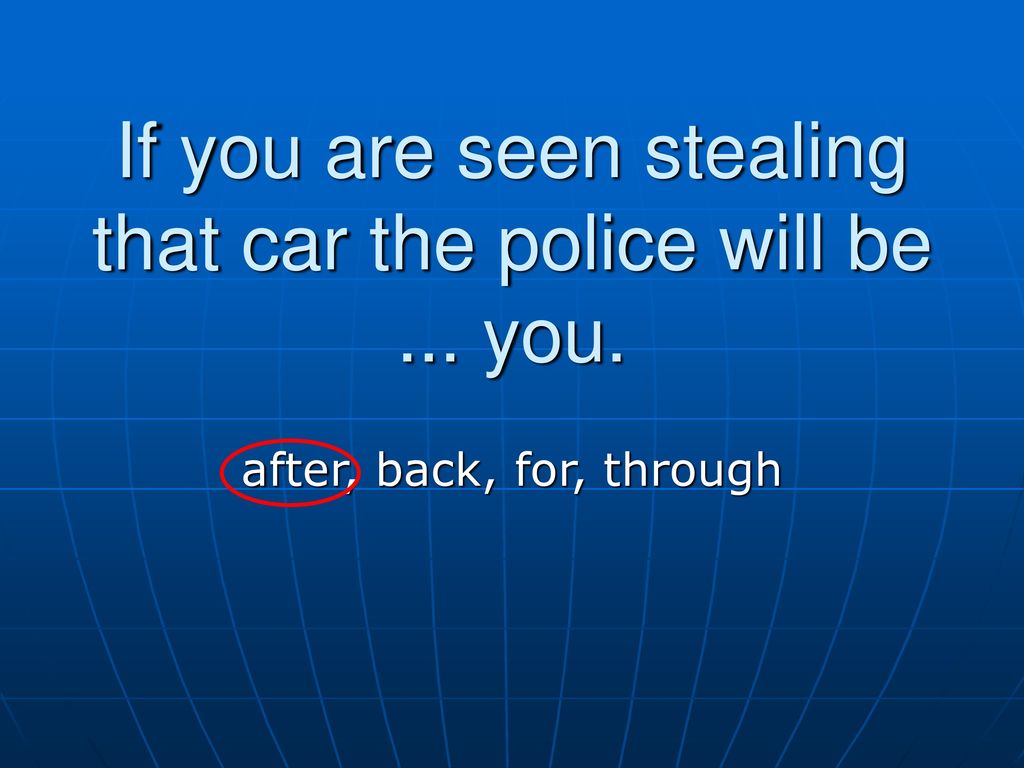
National Insurance Crime Bureau. NICB is probably your best bet because this is the service used by insurance companies and police departments to report stolen vehicles. NICB offers a free service to the public to assist in determining if an ATV, or any other vehicle, has been stolen, but not recovered. You can also determine if an ATV has been reported as a salvage vehicle by a participating NICB insurance company. This is important because a salvaged ATV, in addition to potentially having unknown damage, can never be registered for highway use in most states. To use the NCIB’s “VINCheck” you simply have to enter the VIN number and you will get the results. Be aware, you are limited to five VIN checks per day.
Stolen 911-ATVs. The Stolen 911’s website is not going to connect you to the stolen vehicles database, but it is a fairly widely used service where ATV owners who have had an ATV stolen list info about the ATV. Stolen 911 will have the stolen ATV’s VIN indexed by google so it is easy for you to find. While you can search for the VIN, this website is also helpful because the owner can list descriptions and photographs of the ATV. The owner may also post a reward so you could get lucky.
Stolen 911 will have the stolen ATV’s VIN indexed by google so it is easy for you to find. While you can search for the VIN, this website is also helpful because the owner can list descriptions and photographs of the ATV. The owner may also post a reward so you could get lucky.
Stolenregister.com. Stolen Register is a database of stolen property. It allows you to search by almost any identification information, including the engine’s serial number (which can be important as a stolen engine can be swapped into a different ATV body), VIN or plate number. You can also search by incomplete information if that is all you have, or you can search pictures on their database.
Carfax. Everyone knows what carfax is by now. You can use it to look up ATV history as well. It can be pricey so hopefully you can find someone with a subscription willing to look it up for you. I have heard of people on Craigslist that will look up a Carfax report for a nominal fee, but I can’t recommend it as I don’t know if that violates anything important.
VIN fraud is the act of replacing or altering a VIN in order to mislead consumers or law enforcement. It often occurs in conjunction with vehicle theft. The two most common types of VIN fraud include:
VIN cloning is the most common method of VIN fraud. It involves taking a VIN from a similar, legally registered vehicle and placing it on a stolen vehicle to hide its identity. By doing this, a thief can more easily evade law enforcement and sell a stolen vehicle without worrying about the VIN registering on NICB.
This has become a more popular tool for thieves as it is pretty effective. The thieves can grab a new VIN from a recently salvaged vehicle, dealership ATVs, or from the internet. Once they have a legitimate VIN, a counterfit VIN label can easily be produced with low-tech equipment.
VIN cloning can result in two registered ATVs with the same VIN. In the event these two ATVs ever attempt to get registered in the same state, all kinds of issues arise and may result in your ATV being impounded. You may then become the subject of a criminal investigation, trying to prove you were not aware of the cloned VIN.
VIN altering is defined to include any of the following:
This is a very common sign of a stolen ATV. You would be surprised how many people buy a used ATV without checking the VIN, only to find later the VIN has been scratched off so it is unreadable. By that point, the new owner faces quite the predicament as they know they are driving a stolen ATV that is going to get impounded once they report it.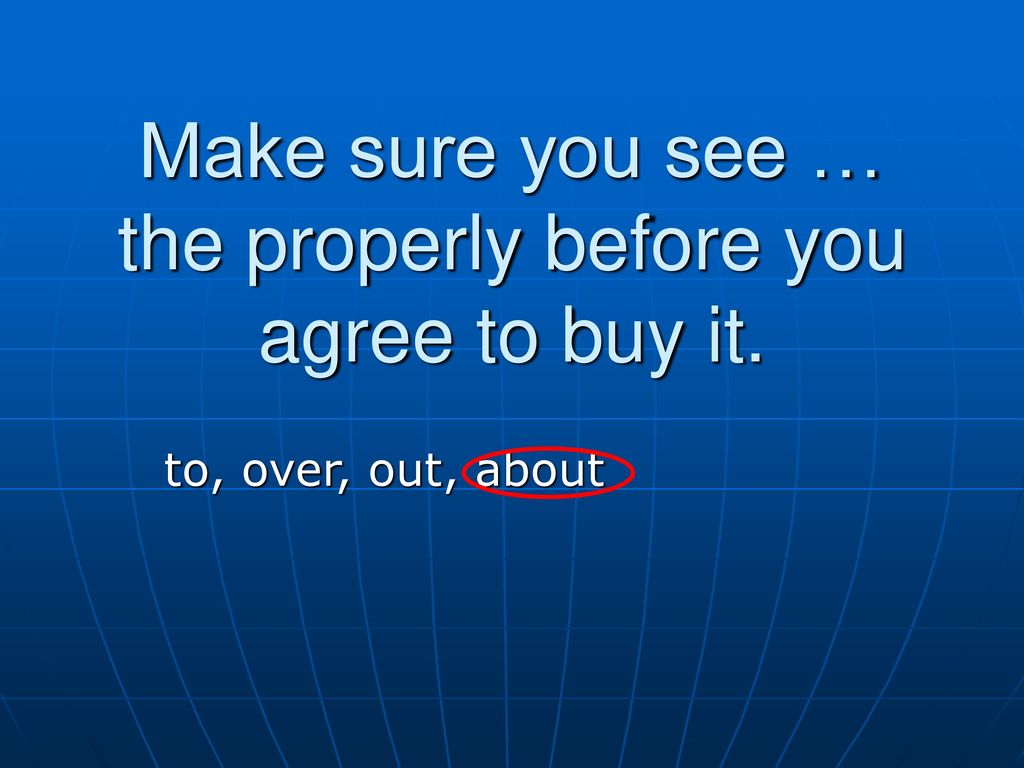
Following all the tips we talk about in this article will go a long way to helping you determine whether a used ATV may have been subject to VIN Fraud. In addition to following all those tips, make sure you thoroughly inspect the VIN on the ATV. Make sure there is no damage to the VIN label and that it is clearly legible. Also make sure the VIN on the label matches all title documents and service records that may be available to you. You can also conduct a title search and have your insurance carrier conduct a check for possible clones.
One sneaky trick you can learn is that the 17-digit VIN is not random. The position of each letter or number in the VIN reveals important information about where and when the ATV was made, the type of engine it had and various other pieces of information. You can look up the individual manufacturer and learn all the specific digits you should be looking for to match the ATV you are looking at, but the digits that you will find the most beneficial for spotting a sloppy VIN cloning job are the following:
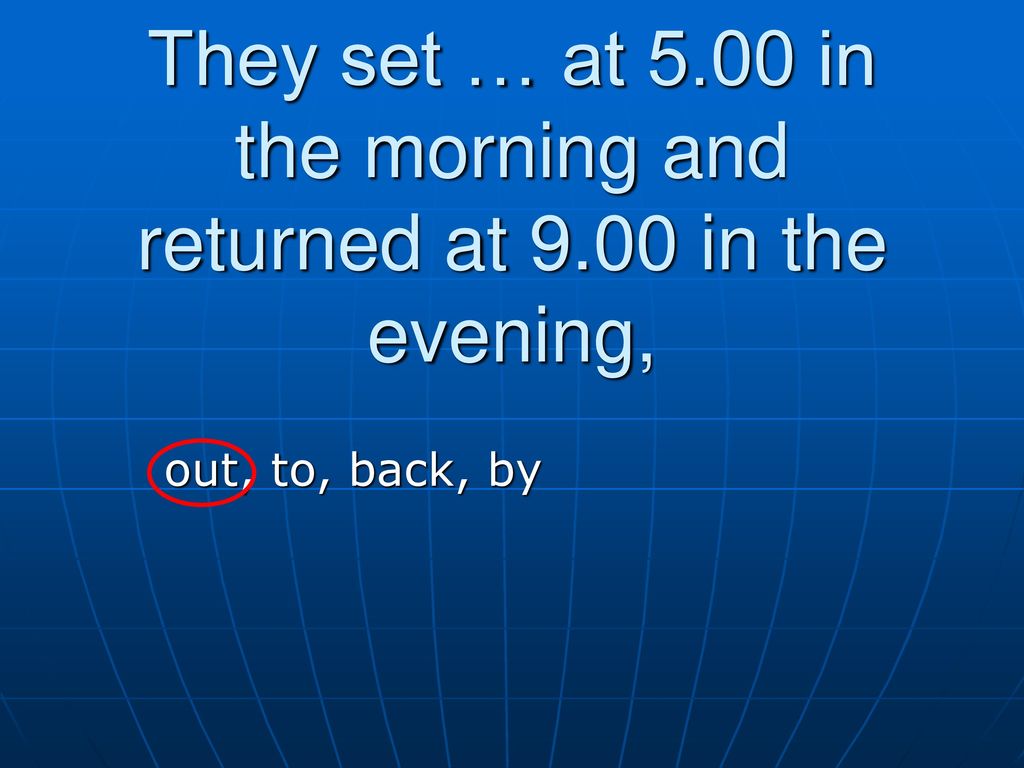 e. H for Honda, K for Kawasaki and so forth. If you are looking at a Honda and the second digit is a P, then it is likely a cloned VIN.
e. H for Honda, K for Kawasaki and so forth. If you are looking at a Honda and the second digit is a P, then it is likely a cloned VIN.Getting a title is the best way to be safe, but if that isn’t possible, then make sure to get a bill of sale. I would get both if possible.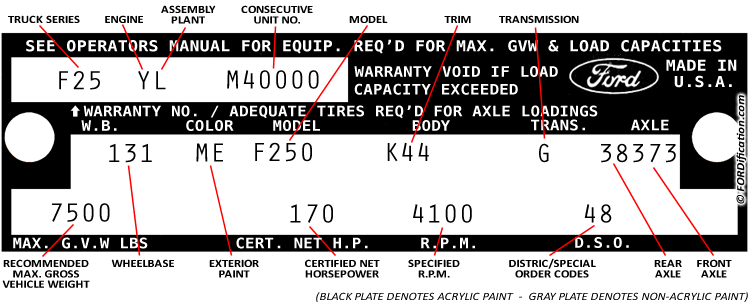 Even if you feel good about the sale and the VIN checks out clean, you can’t be sure there wasn’t VIN fraud or that the police department that took a stolen vehicle report actually submitted their report, or that the person from whom the ATV was stolen even knows it is gone yet.
Even if you feel good about the sale and the VIN checks out clean, you can’t be sure there wasn’t VIN fraud or that the police department that took a stolen vehicle report actually submitted their report, or that the person from whom the ATV was stolen even knows it is gone yet.
A bill of sale is absolutely essential, especially if there is not a title to the ATV. While a bill of sale does not need to be anything complex, full of legalese, you want to make sure you include some key information.
A bill of sale is a contract between you, the buyer, and the seller that describes the transaction. Include all important details such as the agreed upon price, the vehicle’s description, the ATV VIN, a description of the ATV including condition and as much information about both the buyer and the seller as you can.
You should include the seller’s name, address and phone number. Importantly, don’t just take the seller’s word for it. Make him show you his/her driver’s license and copy all the information you can.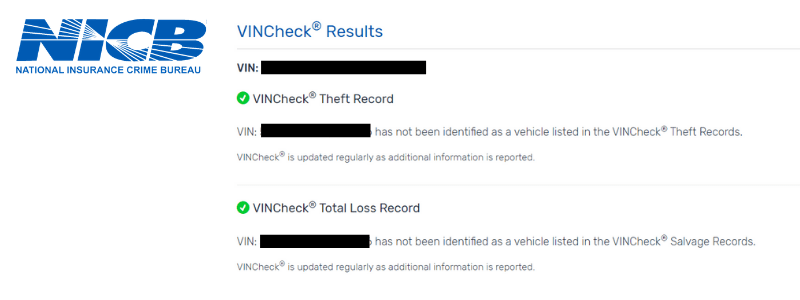 Hopefully, you are meeting the seller at their house as well, so confirm that address matches the driver’s license. The bill of sale can be a valuable defense should you be caught with a stolen ATV. It can also provide you the information you need to seek recourse against the seller after you lose the ATV you paid for.
Hopefully, you are meeting the seller at their house as well, so confirm that address matches the driver’s license. The bill of sale can be a valuable defense should you be caught with a stolen ATV. It can also provide you the information you need to seek recourse against the seller after you lose the ATV you paid for.
Now is the fun part! Get out and ride, but there are some more things to looking into as well.
Anyone who knows us real well, or has spent much time on our website, knows that we are big on purchasing used ATVs.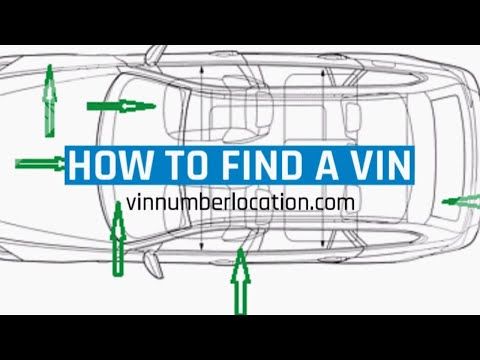 Especially in situations where you are either a first time buyer or are purchasing for a child. (Although, those are far from being the only reasons buying used is a good idea - I've been known to gush about my Warrior 350.)
Especially in situations where you are either a first time buyer or are purchasing for a child. (Although, those are far from being the only reasons buying used is a good idea - I've been known to gush about my Warrior 350.)
But buying used does have some risks. When you meet with a buyer, there is always the potential that what you're looking at is a stolen ATV. We hate saying that because the majority of people that we have worked with have been really upstanding. But the unfortunate reality is that ATVs are fairly easy to steal. (No, we have absolutely never stolen anything, nor are we advocating that you go out and give it a try).
This is unfortunate not only for the original owner, but for the unsuspecting purchaser as well. If your ATV is confiscated because it was reported stolen, there is no compensation for any money that you've invested. On the upside, there are steps that you can take ahead of time to help avoid purchasing a stolen ATV. Before you plan on meeting with a seller, it's a good idea to make a mental note of any legal requirements for your area.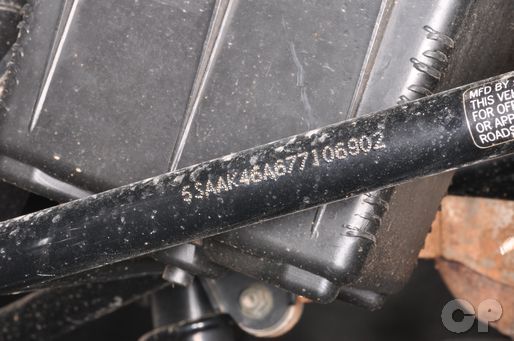 Additionally, the three steps below should help you to know if you're walking into a deal that's too good to be true.
Additionally, the three steps below should help you to know if you're walking into a deal that's too good to be true.
Ok, there are a couple of caveats to this. If the seller says there is no title - this is not a deal breaker. For one, title requirements vary from state to state. You really need to know the requirements for the state you are purchasing from before you can assess whether or not something fishy is going on. Second, some ATVs are sold new with a certificate of origin instead of a title. That means that at the time of purchase, it is up to the owner to get a title from the DMV. Again, depending on the state, the owner might not mess with it because it might not be a legal requirement. And while I hate to admit this, there are some people out there who won't get a title, even though they are required by law. Fortunately, it's usually fairly easy to get a title transferred into your name. You'll want to make sure that you contact your local DMV to find out what the requirements for that might be. A great place to look up state specific requirements and contacts is DMV.org.
A great place to look up state specific requirements and contacts is DMV.org.
Running a VIN check is not only free, it is extremely easy. All you need is the VIN in question and an active internet connection. We like to use the VINCheck service provided by the National Insurance Crime Bureau. The NICB lets you run up to five VINChecks within a 24-hour period. For most people, that is more than enough. But before you go whipping out that smartphone, let's talk a little about etiquette. You should always ask the seller's permission to run the VIN. Most people are more than willing to let you. In fact, the majority of sellers we've worked with have never heard of the NICB database and were not only willing to let us run the VIN, but were curious about the site and anxious to take down the web address. So not only does asking permission keep you from looking shady yourself (or accidentally implying that you think the seller might be shady), but it can strike up a conversation and hopefully give someone else a tool that they can use in the future as well.
Hopefully the first two steps have gone smoothly. Maybe there is a title, maybe there's not. Ideally, you would have some piece of mind from running a VINCheck. Even better, maybe you've established a rapport with the seller by sharing the awesome resource that is VINCheck. You're ready to make the sale, so now what do you do?
Our final tip for protecting yourself is to always carry a couple of blank copies of a Bill of Sale. Why more than one copy? Well you'll want to make sure that both you and the seller have a copy. Since most people don't carry a Xerox around with them, we usually take at least two. Yes, it's kind of a pain to fill it out twice, but it makes sure everyone has an original copy. Completing a Bill of Sale on a used ATV does a couple of different things.
First, let's say the ATV was stolen but for some reason or another it hadn't been reported at the time that you purchased it. If you are caught with a stolen ATV, it's confiscated. There's no way to be reimbursed and you are out whatever your purchase price was. A Bill of Sale helps keep you from looking like you knowingly purchased stolen property. Additionally, you have the seller's contact information. In the event that your newly purchased ATV does turn out to be stolen, you have a paper trail that doesn't start with you. You may even be able to take the seller to small claims court to recoup some of your costs.
There's no way to be reimbursed and you are out whatever your purchase price was. A Bill of Sale helps keep you from looking like you knowingly purchased stolen property. Additionally, you have the seller's contact information. In the event that your newly purchased ATV does turn out to be stolen, you have a paper trail that doesn't start with you. You may even be able to take the seller to small claims court to recoup some of your costs.
This isn't to say that a Bill of Sale only protects the buyer. If you happen to sell an ATV that has been stolen (and I sincerely hope that you had no idea), the Bill of Sale gives you a record of the new owner's contact information. That way, if you are ever approached about said ATV, you can at least help to track it down. Since completing a Bill of Sale is something that we feel so strongly about, we thought we'd share the form that we use with you. Click the image below to download a PDF of the Bill of Sale that we use each and every time we purchase a used ATV.
We have purchased a lot of used ATVs and we walk through these steps every time. It's a system that we find works really well for us. If you take these steps the next time you are negotiating, you can greatly minimize your risk of purchasing a stolen ATV. Again, the key is not to fall for a deal that's too good to be true. If you know of someone who is planning to purchase a used ATV, please pass these tips along. ATV theft is a crime that affects more than one person and not doing your due diligence is the quickest way to become a victim.
But seriously, keep in mind that these tips are just tips - things we've learned from our own personal experiences. We're not lawyers and we don't pretend to be. But we do care about doing things right. Both morally and legally. That being said, it's important to use your own judgement. If everything checks out but it still feels fishy, walk away.
Fortunately, we've never had any problems with ATV theft but we've met people who have had awful experiences. Do you have any stories about ATV theft? What about any resources for someone looking to purchase a used ATV? And have you ever walked into a deal where something just felt off? Reach out to us on Facebook.
MegaZip
Search Order 0 pcs in the basket 0 r.
All the girls in the little Peugeot do it...
Everyone looks up the VIN from time to time. And not only in Peugeot, but also in Toyota, Nissan and even in a big black Mercedes. Sometimes you can find it right away, and sometimes you have to work hard. After all, the treasured tablet is sometimes hidden in the most unexpected places. Therefore, my article will be useful to all those who are faced with the search for VIN for the first time, and especially to the beautiful half of humanity.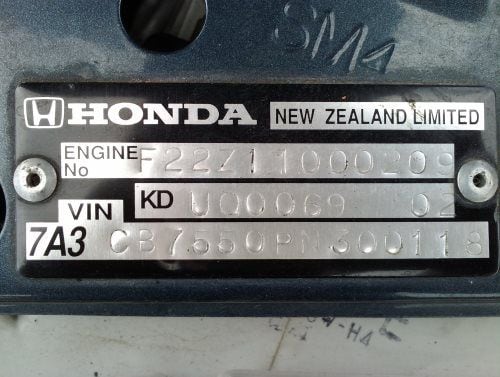
For lovely ladies driving:
For brave ladies on bikes:
Experienced VIN searchers will smile, many will say: “Yes, we know it all!”.
“Well, great!” I will answer. Feel free to put a finger up, share the article with friends, familiar motorcyclists and autoladies, and then wow!!! CLICK HERE AND WE ARE IN THE CATALOGS OF SPARE PARTS!
If you decide to refresh your knowledge or just switch your thoughts from everyday worries and read - welcome under the cat!
VIN (Eng. Vehicle Identification Number) is a unique vehicle code consisting of 17 characters. The code provides information about the manufacturer and characteristics of the vehicle, as well as the year of manufacture. The structure of the code is based on ISO 3779-1983 and ISO 3780 standards. Identification numbers are applied to integral parts of the body or chassis and on specially made number plates (nameplates).
In other words, VIN (hereinafter we give the term more commonly used in the Russian Internet - VIN) is a set of characters that identifies a car or motorcycle and tells all the information about it. Each vehicle is assigned its own unique code, which is not repeated on other vehicles. Like a human DNA code.
And here they are - special number plates:
Yes, I would like to separately note that in place of the VIN code your vehicle may have a body (frame) number. It usually consists of 10-13 characters and looks like this on a car plate:
or like this on a motorcycle:
The frame number, like the VIN, serves to identify the equipment, although it carries less information . The characters in this number are written with a hyphen. The first part carries information about the type and brand of the vehicle, and the last 5-8 digits indicate the serial number (the order in which the equipment left the assembly line).
The first part carries information about the type and brand of the vehicle, and the last 5-8 digits indicate the serial number (the order in which the equipment left the assembly line).
Body/frame number mostly found on vehicles for the Japanese domestic market. You have probably come across beautiful letters JDM more than once on loud tinted cars or in publics dedicated to drifting, tuning and various sports related topics. This abbreviation just means Japanese Domestic Market - Japanese Domestic Market.
JDM technology has a very large army of fans around the world, and Russia is no exception. On the World Wide Web you can find a lot of information, as well as fan clubs, workshops, tuning studios that have dedicated themselves to serving the style of the Japanese Domestic Market.
First of all, of course, let's look at the registration documents for our equipment. For a car and a motorcycle, the PTS (vehicle passport) serves as an “identity document”. Here it is:
In this example, the VIN is indicated in paragraph 1, and in paragraph 8 it is duplicated as the body number. But there are TCPs where the VIN is affixed in paragraph 7 or 8, and in paragraph 1 (VIN) it is indicated "NONE".
If you are a happy owner of a snowmobile or an ATV and want to find the VIN, take the PSM (passport of a self-propelled vehicle) and find the item “factory number of the vehicle (frame)”:
I think everything is clear here. Dealt with documents. Let's learn how to look for VIN directly on the vehicle itself.
CARS
Depending on the country of manufacture, the identification number may be located differently. As a rule, the VIN is duplicated in different places or can even be applied to all the main elements of the body. This makes it easier to find it and at the same time more reliably protect equipment from illegal actions.
This makes it easier to find it and at the same time more reliably protect equipment from illegal actions.
VIN can be stamped either directly on the body (frame) or on a special number plate attached to the body with rivets. Most modern cars (especially for the US market) have a VIN, which is located in a special window under the windshield. It can be seen without opening the hood:
The number is usually duplicated on a sticker that can be found on the pillar or threshold in the driver's door opening.
VIN is often marked on an iron plate located under the hood in a conspicuous place:
Or stamped directly on the car body in the place of the partition between the engine compartment and the passenger compartment:
On cars with a frame body structure, VIN is often applied to the side members:
Another common place is on the floor in front of the driver's seat .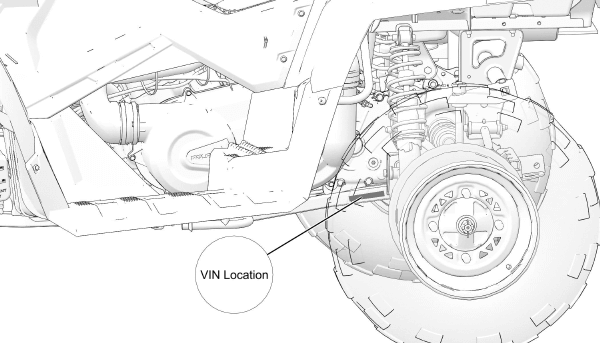
Move the seat as far back as possible and fold down the mat:
0003
On some vehicles, the VIN plate is in the trunk, in the spare wheel compartment:
MOTORCYCLES
also on the right)
In the place of the steering joint, the VIN is knocked out directly on the frame:
And duplicated on the plate:
Some manufacturers (BMW, in particular) place the VIN on their bikes a little differently:
and like this:
VIN on maxi scooters is usually stamped on the frame, as shown:
ATVs
Here are the most popular places:
On the plate under the seat:
On the frame behind the front wheel:
At the bottom of the frame:
Front of the frame:
0003
On the CVT housing:
SNOWMOBILES
Traditionally, the VIN is stamped on snowmobiles on the frame on the right side of the tunnel, there is also a plate on which the identification number is duplicated.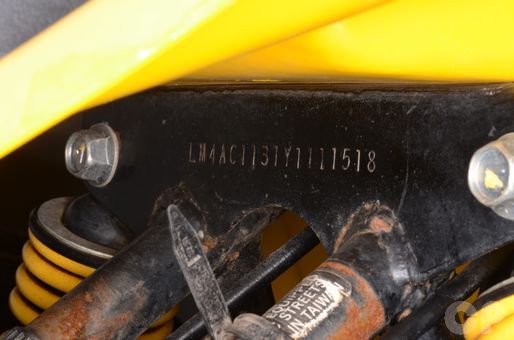 In addition, on many models, the coveted combination of letters and numbers can be found under the seat.
In addition, on many models, the coveted combination of letters and numbers can be found under the seat.
On the “tunnel” on the right:
Under the snowmobile seat on the plate:
Now that we have clearly familiarized ourselves with the locations of the identification number, I offer a small life hack to find the treasured place. As a rule, each user manual begins with pictures showing where the numbered units of the equipment are located. If you have such a booklet in printed and electronic form (you can find it on the World Wide Web) - open the first pages, look at the indicated place, and voila - the quest is completed!
Here's how it looks in my manual:
In place A we move the driver's seat back, bend the mat (maybe you will need to open the cover) and see the VIN, which is stamped directly on the body; in place B, open the hood and find the VIN on a metal plate.
BACKGROUND
The identification number can reveal a lot of useful information about a vehicle. Before buying, the future owner will be able to find out the real mileage, the number of former owners, find out if the equipment was involved in an accident, if it was stolen, and if there are any restrictions on registration actions.
Currently, it is possible to scan and recognize codes using both special scanners and various mobile applications that use the camera. You can also check by VIN code using one of the many online services.
SELECTION OF PARTS AND ACCESSORIES
It's no secret: in the search and selection of spare parts, the identification number is assistant No. 1.
It allows:
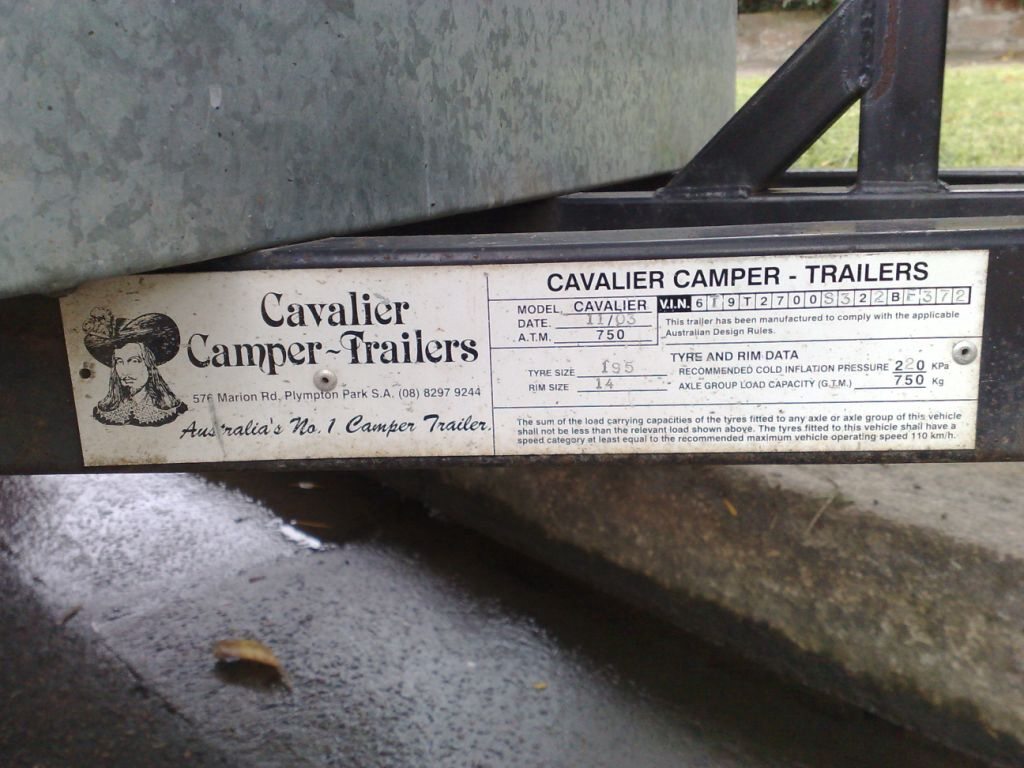
If you find it difficult to do this or want to save precious time, please write to our technical support.
Thank you for reading to the end, I'm sure the article was useful to you!
so as not to run into the killed equipment and do not rub on the killed technique and do not rub on the killed technique and do you have to check it very carefully. How exactly this is done - we will tell in this article.

Since the ATV must be inspected not only from above, but also from below, it is advisable to check it at a service with a lift. As an option, a garage with a pit or a flyover is also suitable.
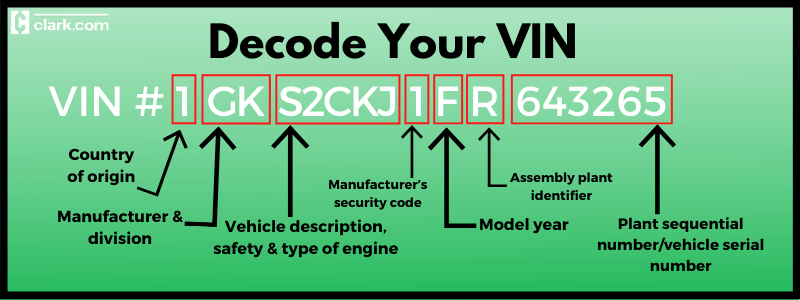
 If the mileage is low, and the handles and seat have a lot of scuffs, most likely the odometer reading is incorrect.
If the mileage is low, and the handles and seat have a lot of scuffs, most likely the odometer reading is incorrect.
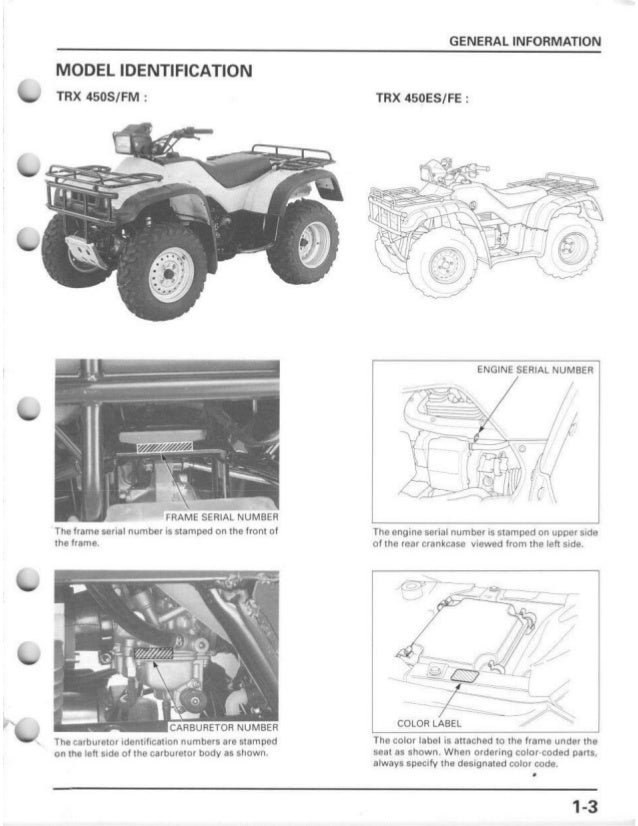 If so, the engine is most likely overheating.
If so, the engine is most likely overheating. Now jack up the front end and continue checking.
If it is possible to inspect the ATV from below, we inspect everything that is visible: bottom protection, frame, suspension. Should alert:
Should alert:
Once the ATV has been inspected from all sides, it's time to check how it works.
What we are doing:

